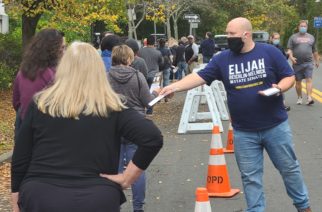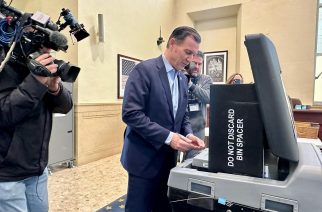
SUNY Chancellor Kristina Johnson outlined her plan for the SUNY system, including using more renewable energy, doubling the amount of research, and creating an individualized experience for students on all 64 campuses.
State University of New York Chancellor Kristina Johnson delivered her first State of the University System Address on January 22, sharing her vision to increase research, encourage more individualized education and reduce the system’s carbon footprint across 64 SUNY campuses within the next decade.
“In my travels to the campuses, I have developed a soaring pride that SUNY is able to offer its students so many different opportunities to build a better world,” Johnson. “Each SUNY school is distinctive, with its own history, legacy, and future, but each is also the cultural and economic heart of its community—offering crucial resources for local businesses as well as educating their workforces.”
Johnson—an energy expert, researcher, and entrepreneur, as well as experienced educator—called for a doubling of research and innovation across the SUNY System in the next decade.
With prior experience as Dean of the Pratt School of Engineering at Duke University, and as a current member of the National Academy of Engineering and the National Academy of Inventors, Johnson is familiar with the importance of research and modernization.
She is looking to expand outreach and give more opportunities to students through internships through out of classroom experiences with innovators and entrepreneurs. These initiatives will focus on helping students to learn how to use new technology integral to getting ahead in their field.
“In terms of education and research, the boundaries between disciplines are disappearing,” she said. “For SUNY to be a leader in this next century and realize the potential of artificial and augmented intelligence, we need to increase the cross-disciplinary research, scholarly work, and outreach we do.”
Johnson hopes to expand opportunities and internships in emerging fields like artificial intelligence, robotics, data analytics, and their applications to education and health care, and by making targeted investments in research and faculty development.
“An individual education is not just about helping our students chart a course through our classrooms,” she said. “It is about helping students with different backgrounds and different resources succeed.”

Through the Excelsior Scholarship Program, the Tuition Assistance Program, and other state scholarships, half of SUNY students now attend college tuition-free, Johnson pointed out.
But she added that “tuition alone is not enough to help all of our students stay in school and finish their degrees. Other financial concerns, academic barriers, and the general unpredictability of life are challenges we need to be prepared to help our students overcome.”
To that end, she is calling for for new student emergency aid programming – currently being piloted at seven SUNY campuses to address family emergencies and unexpected financial hardships – to be expanded to all 64 campuses.
At one campus, a similar program used funds of as little as $100 to help 87 percent of the students return to class and remain on track to finish their degrees.
In addition, she wants to create a food pantry on every campus and pledged to continue to lead the way in preventing sexual assault and violence.
Another major initiative will be a push toward renewable energy across the SUNY system.
Last year SUNY spent $189 million on energy, but the future goal is a transition to clean energy.
Johnson estimates the plan will cut back SUNY’s carbon footprint by more than 400,000 tons of C02 equivalents per year.
Johnson called for purchasing 100 percent of SUNY’s electricity from zero-carbon sources and deep energy retrofits at SUNY campuses, which represent 40 percent of state-owned buildings, and announced the goal to source 100 percent of SUNY’s electricity from zero-net carbon sources as soon as possible.
She also called for all new SUNY buildings to be designed to achieve zero-net carbon emissions.
“The United States has to get a grip on our carbon emissions. And SUNY, as an engine of innovation, has a major responsibility to lead,” she said. “Certainly, our students, who are highly committed to sustainability, want and expect us to lead. Fortunately, Governor Cuomo is one of the nation’s most important leaders on this issue.”









